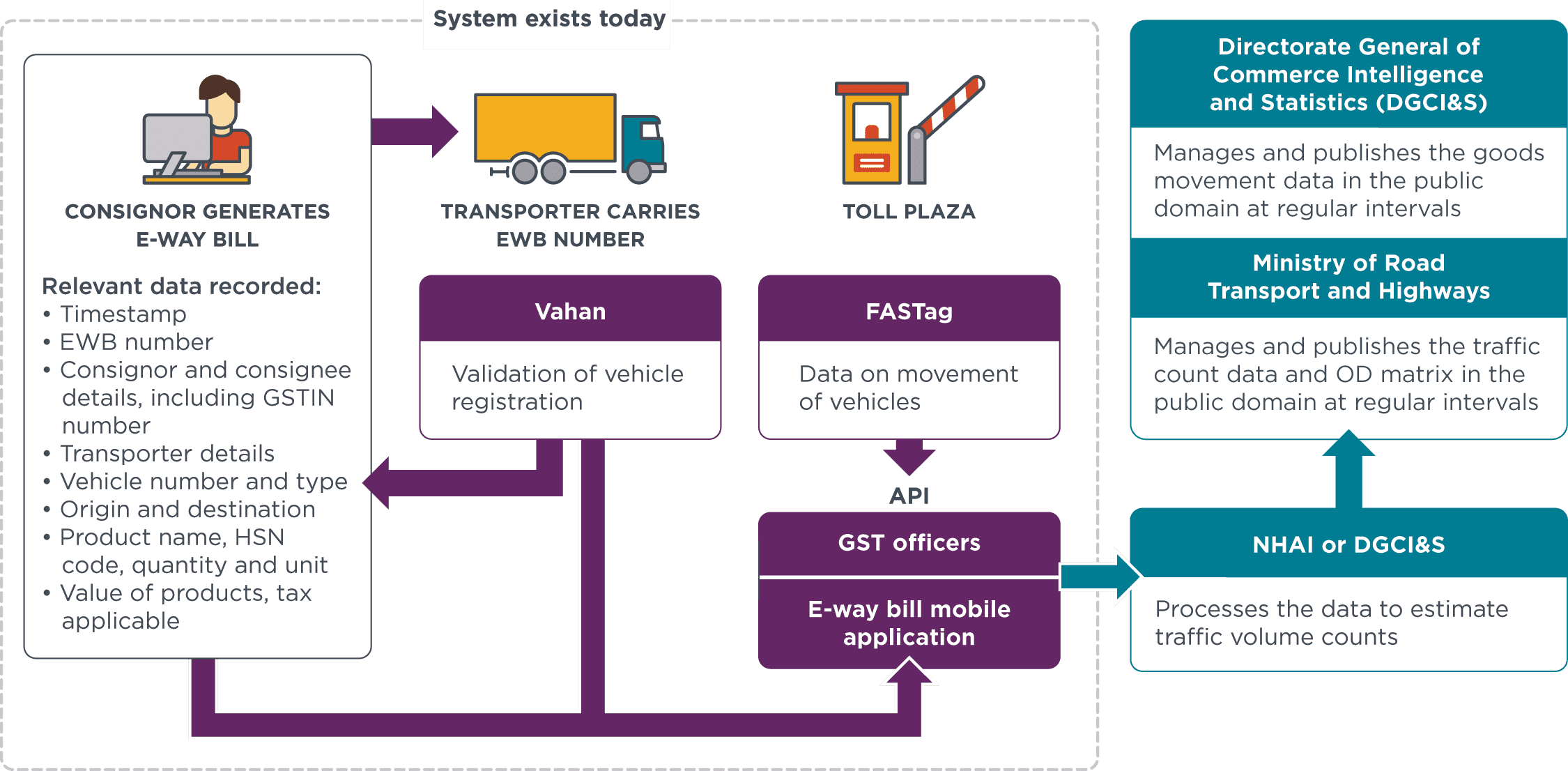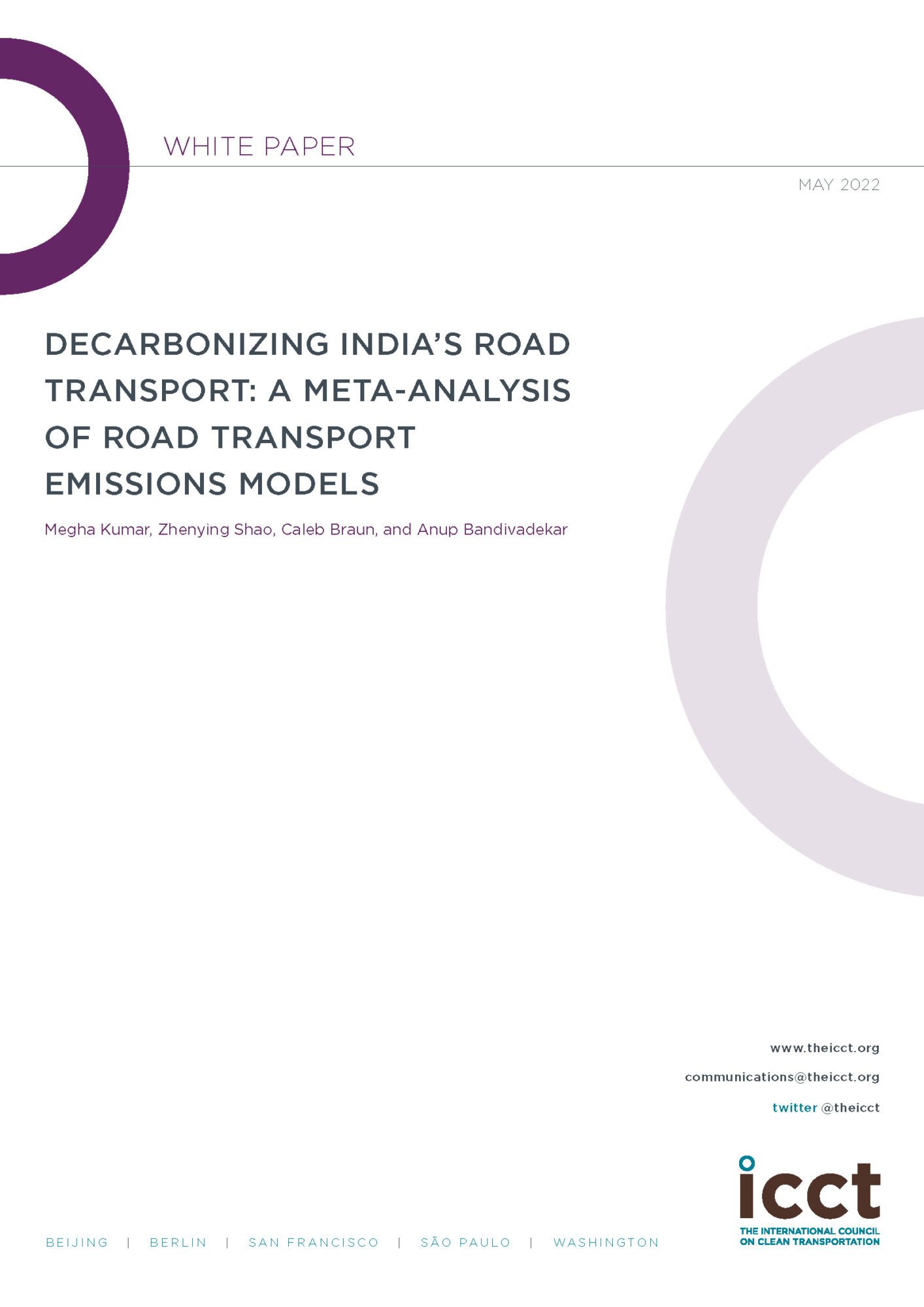Blog
Lost in transit: Opportunities to remove public data roadblocks in Indian trucking
Today India has about 4 million trucks on the road and these carry about 70% of the country’s domestic freight. With the freight activity of trucks projected to grow by more than two times by 2050 and trucks already responsible for about half the well-to-wheel CO2 emissions from on-road transport, adopting zero-emission technologies such as battery electric and fuel-cell electric trucks is critical to decarbonizing the transport sector and achieving India’s climate goals.
But a successful transition to zero-emission trucks will require extensive data, including about truck travel patterns and operations. In India, the data that’s currently available to the public has gaps and is not in a form that’s useful for researchers and policymakers. Fortunately, there are several ways to begin to fill these gaps.
It’s not difficult to see where the data challenges come from. For one, trucking in India is largely unorganized: 80% of the operators have small fleets of fewer than 10 trucks. Beyond the sheer multiplicity of truck operators, small operators tend not to log data about their operations like larger fleets do. For another, there is limited data published by the national government. The Ministry of Road Transport and Highways (MoRTH) maintains the national register of vehicles registered by regional transport offices and it provides up-to-date information on the registration of different types of vehicles disaggregated by fuel type, vehicle classes, and region of registration. MoRTH also publishes an annual road transport yearbook that reports national-level freight activity in tonne-km estimated as a function of gross domestic product, but researchers find that these estimates are significantly overestimated. Furthermore, data on the age of vehicles, annual vehicle activity, load factor, and energy consumption is scarce. This results in a wide range of baseline energy consumption estimates and projections for India’s truck fleet.
International examples offer ways to improve. The European Union implemented a regulation in 2012 that mandates the collection of various data on road freight transport through regular surveys about fleet operators, their operations, and goods transported. In addition, the EU-funded European Transport Policy Information System (ETISplus) project consolidated various datasets into a new reference dataset of road freight transport at various levels: major socio-economic region (NUTS1), states (NUTS2), and district or county (NUTS3). This was instrumental in estimating truck movement on the European highway network and developing recommendations for electric vehicle charging infrastructure deployment targets in the European Union for 2030.
Similarly, in the United States, highway statistics compiled by the Federal Highway Authority contain annual average daily traffic count at different road sections from state transport agencies through the Highway Performance Monitoring System (HPMS), which uses equipment such as loop detectors and laser sensors. This dataset has supported research on county-level zero-emission truck charging and highway hydrogen refueling needs.
With these in mind, here are some opportunities that we see for India. First, there are more than 1,000 toll plazas on national and state highways that already use FASTag, a Radio Frequency Identification (RFID)-based electronic toll collection system that was launched in 2014. Additionally, the MoRTH is conducting pilots for an automatic number plate recognition system and plans to introduce GPS-based toll collection to replace toll plazas in the long term. Toll tax collection regularly captures data on daily traffic disaggregated by different vehicle segments. The National Highway Authority of India (NHAI), under the MoRTH, is responsible for developing, managing, and maintaining national highways, and this data could potentially be captured and processed by the NHAI or an expert agency to estimate traffic counts disaggregated by vehicle types at different road sections and at different times of the day. The NHAI or MoRTH could then publish and maintain this dataset in the public domain. Figure 1 shows what the data flow process could look like.

Figure 1. Traffic count data that already exists at toll plazas through FASTag and how it could be processed and published.
Second, India implemented an electronic way bill (e-way bill or EWB) system under the Goods and Services Tax (GST) regime and it essentially contains the details related to the shipment or consignment of cargo. The consignor generates the bill for transporting goods of more than INR 50,000 in value and it contains a great deal of information on the origin and destination, mode of transport, vehicle type, and goods transported. (The goods exempted from GST are also exempted from the e-way bill system.) More recently, the e-way bill system was integrated with the FASTag and Vahan (national vehicle registry by MoRTH) systems to facilitate the real-time tracking of truck movement to curb tax evasion. This data could be processed by either NHAI or an equivalent expert agency to estimate traffic volume counts and origin and destination matrices in a way that’s useful for researchers and policymakers. MoRTH can then manage the dataset and publish it at regular intervals.
The Directorate General of Commerce Intelligence and Statistics (DGCI&S), under the Ministry of Commerce, already manages and publishes data on the interstate movement of goods via rail and air, and acknowledges the wide data gap on the interstate movement of goods by road. The data generated by the e-way bill system can help bridge that gap. Figure 2 shows a potential roadmap for such a data-collection system using e-way bills.

Figure 2. Truck movement data that could be collected through EWB.
Third, as part of PM GatiShakti, the national master plan for multi-modal connectivity, a Unified Logistics Interface Platform (ULIP) was launched to enable seamless data sharing among government and private entities that are directly or indirectly involved in the Indian logistics eco-system. It enables real-time inventory management and monitoring of cargo movements for shippers, identifies demand for transporters, and serves as a planning tool for policymakers to improve logistics in India. Thus, there are already a few different avenues for road freight data collection in India and what’s left is to make the data available in the public domain.
The future of clean trucking in India hinges in part on our ability to effectively gather, analyze, and leverage truck data from multiple sources. At present, independent research groups are carrying out small-scale surveys in select geographies to fill data gaps and inform policies. This is a highly inefficient use of time and resources.
As India transitions to zero-emission trucks, truck travel patterns and operations data become critical for designing new vehicles, effectively deploying supporting refueling infrastructure, and crafting a variety of policies and programs for decarbonization. Government bodies and agencies could collaborate to address the information gap, and only once it’s bridged can we unlock the full potential of India’s trucking industry.
Authors
Related Publications
Analyzes several of India’s road transport energy and emissions models by comparing key assumptions, energy use, and CO2 emissions by vehicle and fuel type.



